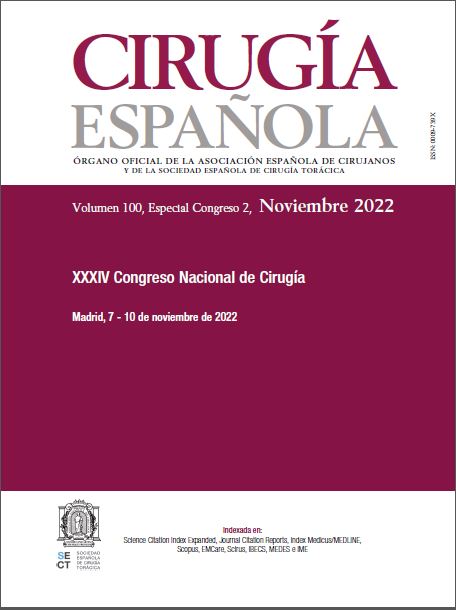V-171 - MOVING THE CONCEPT ASSOCIATED TO LAPAROSCOPIC INTRACORPOREAL RECTUS APONEUROPLASTY (LIRA) TO LATERAL HERNIA
1Hospital Universitario Virgen de la Arrixaca, Murcia; 2Hospital Universitario Son Espases, Palma de Mallorca; 3Hospital General Básico de Riotinto, Minas de Riotinto; 4Hospital Universitario Virgen del Rocío, Sevilla.
Introduction: Lateral hernias are rare and are usually caused after trauma or abdominal surgery as incisional hernias. Difficulties associated to minimally invasive approach to theses hernias include the position of the patient, the management of the hernia defect, the proper overlap of the mesh and the fixation. Since 2005, there is sufficient evidence to support the use of the laparoscopic approach in this type of hernias, using the traditional IPOM technique. New approaches and techniques are being described to improve the results of a minimally invasive approach, such us recurrences of bulging, by closing the defect. Laparoscopic intracorporeal rectus aponeuroplasty (LIRA) has been described as an alternative to simple closure of the defect and as a minimally invasive technique. Despite this, the indications of the concept associated to LIRA are beginning to expand to other complex locations.
The aim of this vídeo is to show the surgical steps for lateral hernias where the concept associated to LIRA is followed to repair this type of hernias.
Case report The LIRA technique was performed on a 56-year-old female patient without previous surgical history. Clinical examination and computed tomography (CT) showed a lateral hernia 6.4 cm in width (W2) and a longitudinal length of 6.6 cm. The concept associated to the LIRA technique was followed by opening the peritoneum and fascia, exposing the fibers of the internal oblique and the posterior rectus sheath near the border of the defect of the lateral hernia over the arcuate line as described by our group. At this area of the abdominal cavity, the peritoneum and the fascia transversalis, and medially the posterior aponeurosis of the rectus muscle, are opened. Also, it is important to create a lateral peritoneum flap, using a hybrid procedure that involves a partially extraperitoneal and transabdominal (TAPE) technique. This manoeuvre will reduce the surface of the mesh that can be exposed to the bowel. Double loop long-term absorbable monofilament running sutures are used for closing the defect. An uncoated medium weight monofilament polypropylene mesh with an absorbable hydrogel barrier based on Sepra® Technology (Ventralight™ ST Mesh) was used. Finally, the mesh is placed intraperitoneally and partially extraperitoneal being cover with the flap of the peritoneum.
Discussion: The best surgical technique for lateral hernias is still not clear. The anatomical location of these hernias is challenging and sometimes compromises bony structures and could be related to nerve injuries. Recurrence and bulging are also frequent. The conventional laparoscopic repair bridging the defect, IPOM, showing more favorable surgical results than open repair. Since the introduction of the concept of primary closure of the hernia defect (IPOM-plus), the surgical repair of hernias in different locations has changed, although the concept of LIRA could be related to better results in term of recurrences, bulging and pain. The idea of expanding the indication of LIRA has recently been described plus to repair M2-M4 primary and incisional hernias and the use of this technique for lateral hernias provides another extension of the concept.







